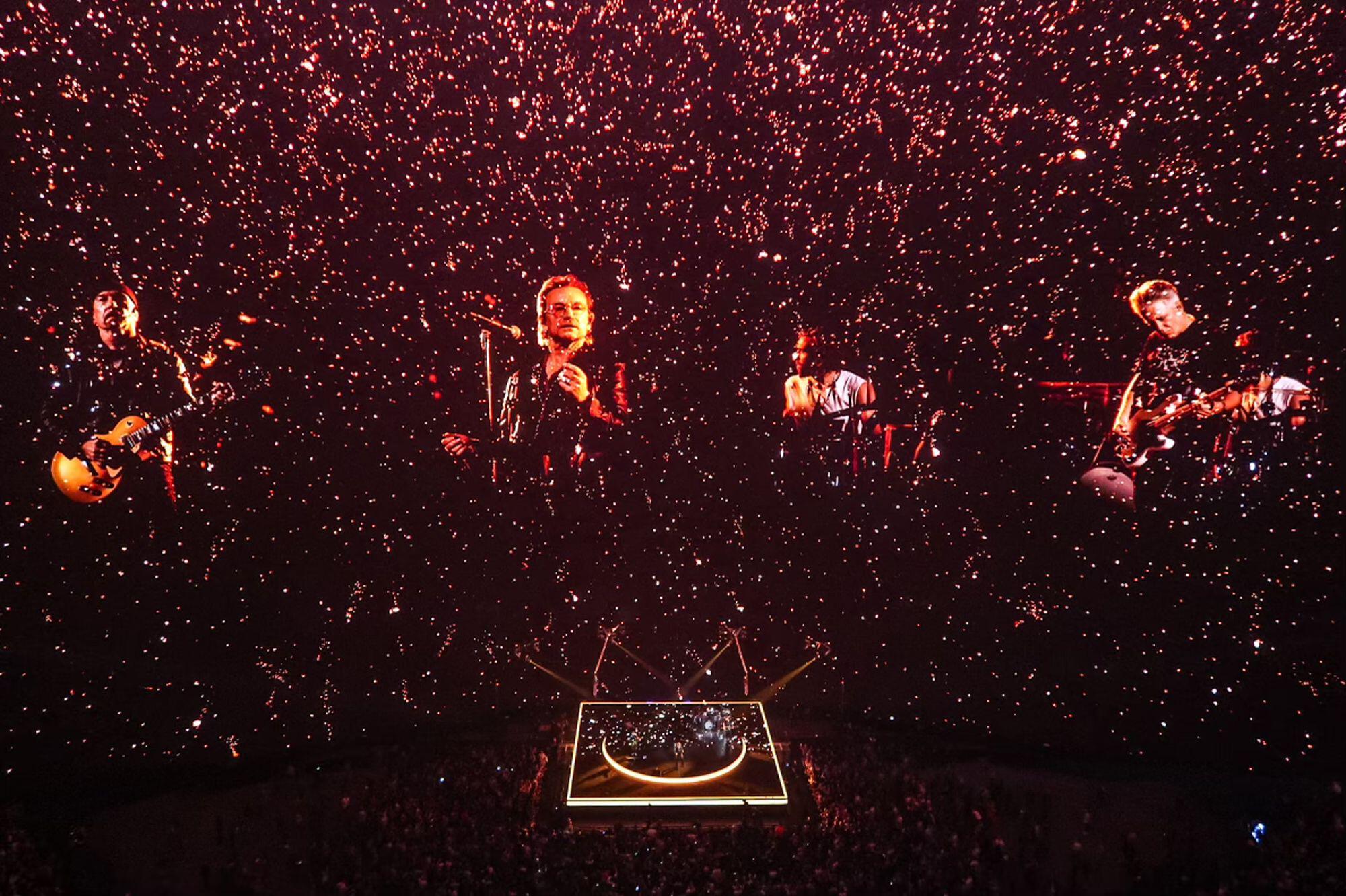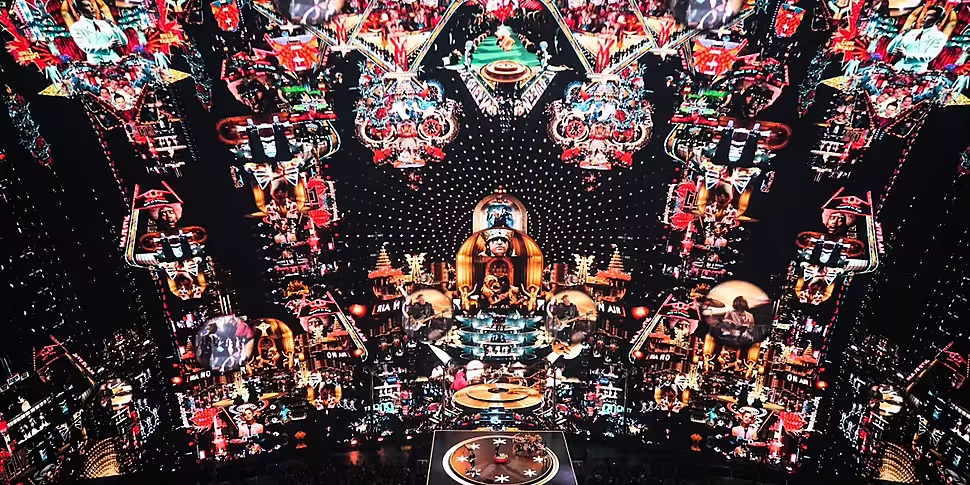It’s hard to imagine performing a “normal concert” following U2’s Las Vegas residency, according to band member Adam Clayton.
U2 have just started their Las Vegas residency, performing 25 shows between September 29th and December 16th from the Sphere to a crowd of nearly 20,000 people.
Planning for the event took over a year, according to Newstalk Tech Correspondent Jess Kelly, as producers tried to maximise the “potential of the 5.7 million cubic feet at their disposal”.
U2 lead guitarist The Edge told Jess on On the Record their first performances went “way better than I ever could have expected”.
View this post on Instagram
“It's a theory until the audience are in and then you actually do it for real and you have expectations,” he said.
“But everything just connected in a way we were blown away by.”
Mr Clayton said he was amazed at the “clarity in the sound” while performing the giant spherical venue.
“The thing you just don’t know is when you mix that sounds with those images and the utility of the images and the quality of the images” he said.
“But a lot of people said to me it’s hard to imagine a normal concert now – this changed it for everyone.
“It’s exciting to be the first doing that.”
The Sphere holds the single largest screen in the world with 268,435,456 video pixels stretching both inside and outside the venue.
These pixels have created giant optical illusions and backgrounds to accompany the band through their 1991 Achtung Baby album.
Oooof… Achtung Baby on the strip pic.twitter.com/3EBRXbJNDE
— Jess Kelly (@jesskellynt) October 1, 2023
Designer Rick Lipsen said the band were in “all the conversations” around the design of the show.
“They’re every creatively attuned and their whole raison d’etre is, what they call, to break the fourth wall,” he said.
“For years, that’s what all those shows have done, whether that’s by catwalks or screens in the room a 360 production.
“360 was deliberately scaled up so that it was so large it would have all round impact on the stadium scale but then it focused the attention to the band.”
 Bono, The Edge, Adam Clayton and Bram van den Berg of U2 perform during opening night of U2: Achtung Baby, 29/09/2023. Image: Sipa USA / Alamy Stock Photo
Bono, The Edge, Adam Clayton and Bram van den Berg of U2 perform during opening night of U2: Achtung Baby, 29/09/2023. Image: Sipa USA / Alamy Stock PhotoPerforming from a stage they see as a “sculpture or raft”, Mr Lipsen said U2 and the production team carefully chose the graphics to display around the audience.
“We don’t have [huge images] on the screen the whole time,” he said.
“There’s large spectacular immersive parts of the show where it’s about the video landscape,” he said.
“But other times we have a need and a want to see the reactions on [the band’s] faces and the emotion in the music.”









